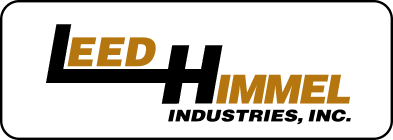Anodizing
We have one of the largest Anodizing facilities on the east coast.
We offer anodic finishes in class I and II clear, a full range of bronzes, and black hard coating. Our tanks are set up to handle loads up to 33′ long x 6′ deep x 2′ wide. We offer a quick turn-around and quality finish.
Anodize Process
| Pre-Treatment: Cleaning is done in a non-etching, alkaline detergent heated to approximately 145 degrees Fahrenheit. This process removes accumulated contaminants and light oils.Rinsing: Multiple rinses, some using strictly de-ionized water, follow each process step.Etching (Chemical Milling): Etching in caustic soda (sodium hydroxide) prepares the aluminum for anodizing by chemically removing a thin layer of aluminum. This alkaline bath gives the aluminum surface a matte appearance.Desmutting: Rinsing in an acidic solution removes unwanted surface alloy constituent particles not removed by the etching process.
Anodizing: Aluminum is immersed in a tank containing an electrolyte having a 15% sulfuric acid concentration. Electric current is passed through the electrolyte and the aluminum is made the anode in this electrolytic cell; the tank is the cathode. Voltage applied across the anode and cathode causes negatively charged anions to migrate to the anode where the oxygen in the anions combines with the aluminum to form aluminum oxide (Al2O3). Coloring: Anodic films are well suited to a variety of coloring methods including absorptive dyeing, both organic and inorganic dyestuffs, and electrolytic coloring, both the Sandocolor® and Anolok® processes. Sealing: In all the anodizing process, the proper sealing of the porous oxide coating is absolutely essential to the satisfactory performance of the coating. The pores must be rendered nonabsorbent to provide maximum resistance to corrosion and stains. This is accomplished through a hydrothermal treatment in proprietary chemical baths or by capping the pores via the precipitation of metal salts in the pore openings.
Causes of color variation in the anodize process“All Aluminum can be anodized.” This is a valid statement but only to the extent it is understood that only the aluminum gets anodized, while the other metal constituents (zinc, magnesium, silicon) present in the alloy do not respond in the same manner. The variance of metal constituents in an alloy is the major reason for color variation—especially when using secondary, recycled aluminum billet. Other variables affecting color variation in the anodize process include temper, anodize tank chemistry, shape geometry and material load size. Anodizers have control over their tank chemistry, including temperatures, solution concentrations and the time material spends in each tank, but they have no control over the alloy, temper, or shape of the aluminum parts. These variables can make it extremely difficult to achieve an exact color from run-to-run and load-to-load. To ensure the most consistent anodize color:Maintain metal consistency. The easiest way to ensure metal consistency is to work with one metal source/extruder per project and request that all metal come from one “lot” of material. Do not mix aluminum alloys. Mixed alloys, or even mixed tempers, will not produce uniform results. For best results use 6063 alloys for extrusions and 5005 for flat sheet stock and fabricated parts. (6061 and 5052 can be used if structural alloy is required but will not give similarly acceptable results.) Perform as much bending and forming as possible prior to finishing. Anodic films are very hard, and as a result, most post-production bending causes the film to “craze,” which produces a series of small cracks in the finish, giving it a spider-weblike appearance. Be aware of anodizings effect on welds. The heat developed from the welding process will change the metallurgy on nearby metal or heat-affected zone, or HAZ, and cause localized discoloration, often referred to as a “halo” effect, after anodizing. Use the proper 5356 alloy welding wire and the lowest heat possible. |



